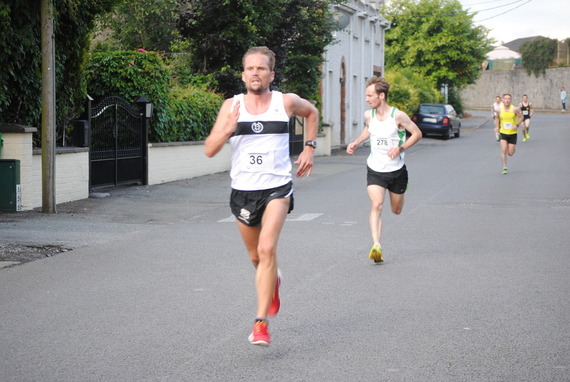Breathing is something we all do naturally, but we don't always pay attention to our breath until something interferes with it. Examples of this might be a cold, asthma, bronchitis, heart complications, or physical exertion.
It's important to understand that our breath is connected to our body and our body to our breath. They reflect the state of one another and provide us a path by which to better control our stress. The same can be said about the relationship between our breath and exercise. Most of us take for granted that as we exercise our breath will just come along for the ride. Many of us may breathe ineffectively during exercise. The result of this ineffective breathing is a less efficient exchange of oxygen and carbon dioxide in our lungs.
How to Breathe
Many people ask whether they should breathe in and out through their nose, through their nose and out of their mouth, or whether they should breathe out every step they take? Many wonder about when they're lifting weights and whether they really need to pay attention to their breath? Let's take a look at a few exercises and some recommendations related to breathing during exercise.
Strength Training -- Exhale When You Lift
Most anyone who has visited a gym knows there is a rule of thumb for how to breathe when lifting weights. That rule is that on the exertion phase, or when the weight is being lifted, you should exhale. When the weight is lowered, you should inhale. It sound simple, but this scripted breathing pattern is actually tricky. The purpose of this pattern is to help limit potentially excessive spikes in blood pressure when lifting heavier weight. I liken it to a pressure valve that helps us to moderate, in this case, our blood pressure. If you are lifting light to moderate weight, or for those people that have trouble with the cycle of inhale and exhale, I generally recommend continuing with a normal breathing pattern. What we are guarding against is holding our breath, which has been associated with large increases in blood pressure.
Running/Jogging -- Most Efficient With Mouth Breathing
Running is an activity in which we know that our breathing will adjust to our pace. We don't have to prepare or ask for our breath to help because it's automatic. In most cases as we begin to run our breathing rate as well as lung volume will increase to adjust to the exercise. As we reach a higher intensity our breathing rate will continue to increase in an attempt to improve the flow of oxygen to muscles and the removal of carbon dioxide from the body. The question is how should you breathe to be most efficient? There are many schools of thought out there about how to breathe when running. One common technique for breathing while running is 2:2 (two steps and breathe in, two steps to breathe out).
According to the book Training Your Distance Runners, there are positives and negatives to both practices of nose and mouth breathing, and most runners find their own natural style. Mouth breathing provides a larger area for greater exchange of air. Since the nose is smaller, it limits the air exchange. Mouth breathing also tends to keep the jaw and neck more relaxed as opposed to nose breathing where the jaw is closed and can be tense.
Just as every person has his or her own running style, so it goes with breathing. Most people will develop a natural rhythm to their breath, which often is in sync with their running tempo.
The key, according to one study, is to become aware of your breath, which will help you regulate how your body is performing.
Do you pay attention to your breathing during exercise? How do you use your breath during exercise to enhance your performance?
This blog was originally published on Ornish Living.
